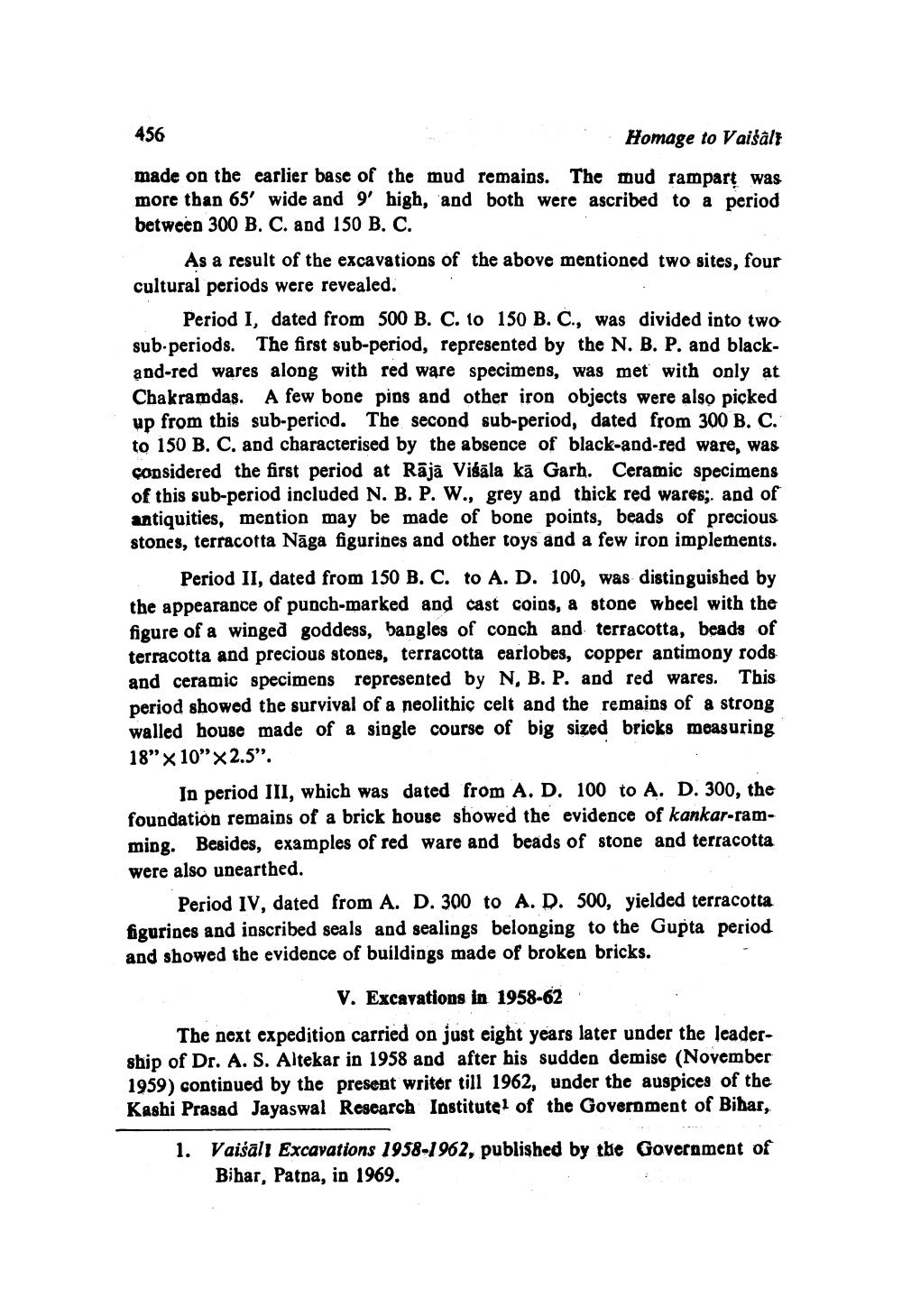________________ 456 Homage to Vaisalt made on the earlier base of the mud remains. The mud rampart was more than 65' wide and 9' high, and both were ascribed to a period between 300 B. C. and 150 B. C. As a result of the excavations of the above mentioned two sites, four cultural periods were revealed. Period I, dated from 500 B. C. 10 150 B. C., was divided into two sub.periods. The first sub-period, represented by the N. B. P. and blackand-red wares along with red ware specimens, was met with only at Chakramdas. A few bone pins and other iron objects were also picked up from this sub-period. The second sub-period, dated from 300 B. C. to 150 B. C, and characterised by the absence of black-and-red ware, was considered the first period at Raja Visala ka Garh. Ceramic specimens of this sub-period included N. B. P. W., grey and thick red wares;. and of antiquities, mention may be made of bone points, beads of precious stones, terracotta Naga figurines and other toys and a few iron implements. Period II, dated from 150 B. C. to A. D. 100, was distinguished by the appearance of punch-marked and cast coins, a stone wheel with the figure of a winged goddess, bangles of conch and terracotta, beads of terracotta and precious stones, terracotta earlobes, copper antimony rods and ceramic specimens represented by N, B. P. and red wares. This period showed the survival of a neolithic celt and the remains of a strong walled house made of a single course of big sized bricks measuring 18" x 10" X 2.5". In period III, which was dated from A. D. 100 to A. D. 300, the foundation remains of a brick house showed the evidence of kankar-ramming. Besides, examples of red ware and beads of stone and terracotta were also unearthed. Period IV. dated from A. D. 300 to A. D. 500. yielded terracotta figurines and inscribed seals and sealings belonging to the Gupta period and showed the evidence of buildings made of broken bricks. V. Excavations in 1958-62 The next expedition carried on just eight years later under the leadership of Dr. A. S. Altekar in 1958 and after his sudden demise (November 1959) continued by the present writer till 1962, under the auspices of the Kashi Prasad Jayaswal Research Institute of the Government of Bihar, 1. Vaisali Excavations 1958-1962, published by the Government of Bihar, Patna, in 1969.




